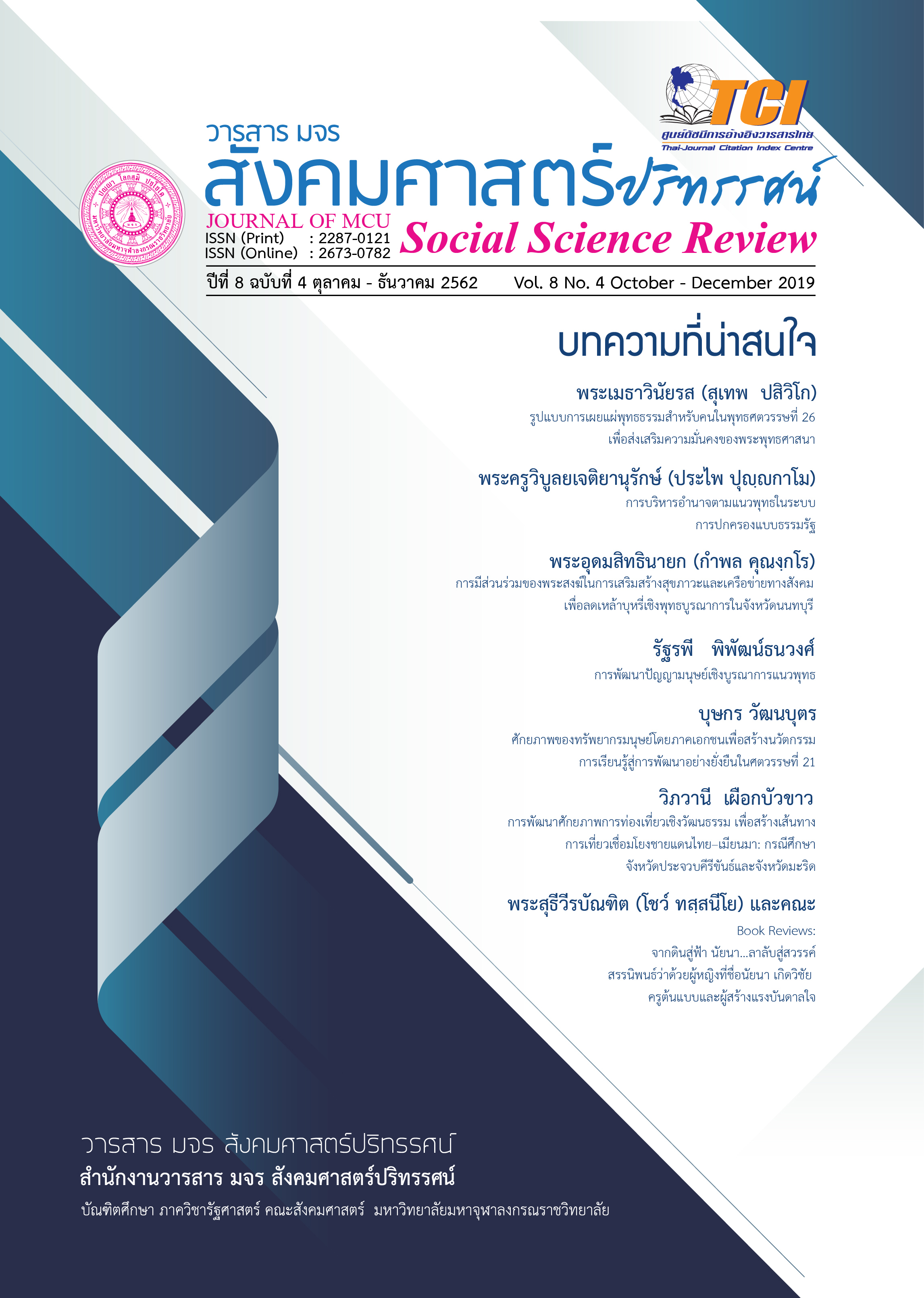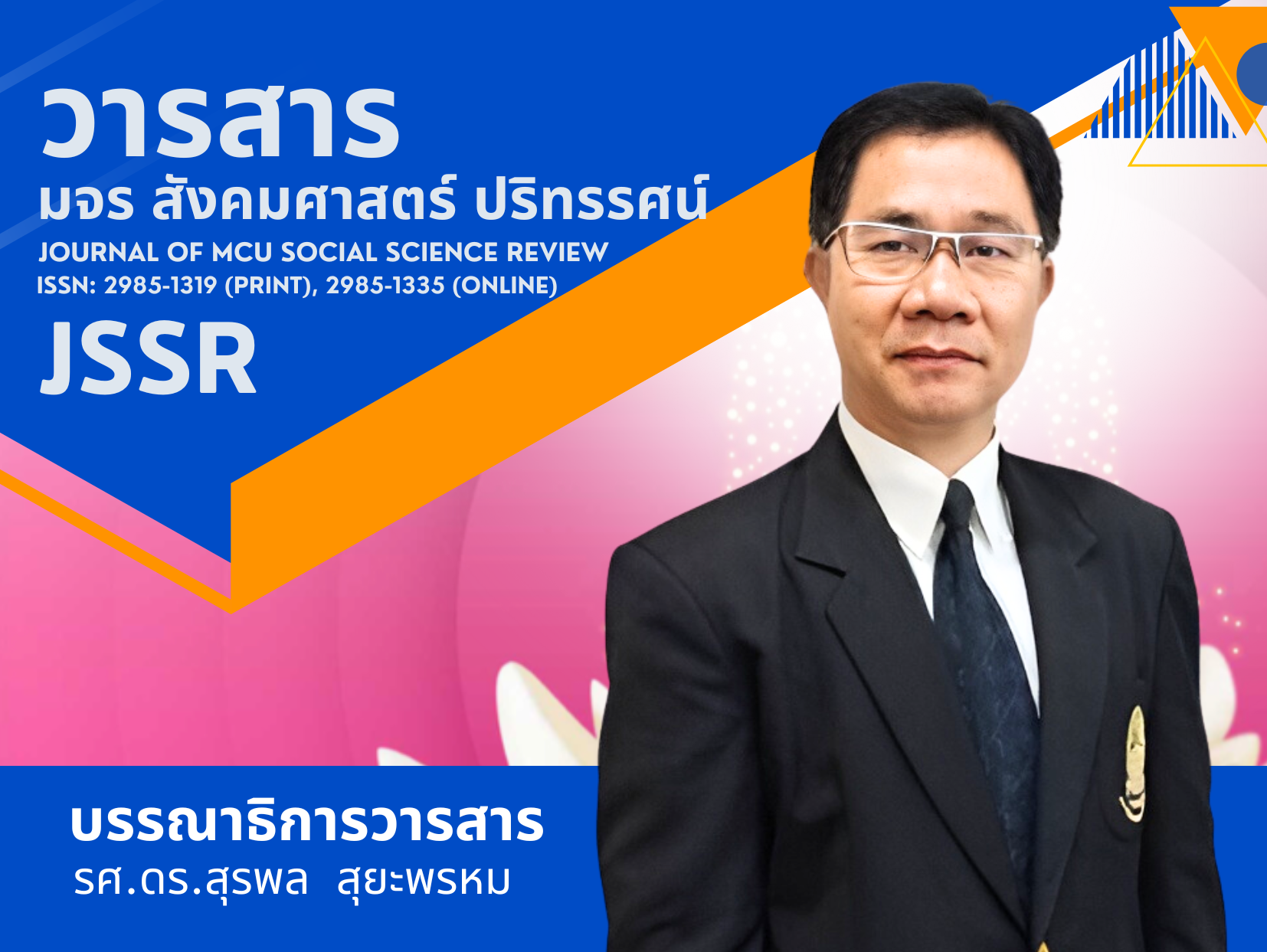DHAMMAVIJAYA OR CONQUEST BY DHAMMA: THE ADMINISTRATIVE SYSTEM BY ASHOKA THE GREAT
Keywords:
Dhammavijaya, Administrative System, government, Ashoka the GreatAbstract
The purpose of this research is to study the administrative system by Ashoka the Great. His administrative system was dhammavijaya or conquest by dhamma which was the highest victory. Dhammavijaya is a model of new politics idea which is led by dhamma. This new politics approach to way of peacefulness, nonviolence, toleration and tranquility. His administration was dhammavijaya which was considered as part of democracy system and main part of Paternalism. He expressed his attitude of superiority and his power over his people like father and children and applied dhamma to his administration. He supported the construction and renovation of temples, social welfare, arts and cultures, public benefits service, edicts of Ashoka rock inscriptions for dhamma promotion, for declaration of liberty principles and for governmental policy announcement. He assigned the representatives for expansion of Buddhism. He also visited every Buddhist monasteries to study and practice dhamma.
Kalinga or presently known as Orissa had been attacked for long time by Ashoka the Great troops. After his conquest of Kalinga, the greatest victory brought him the great remorse and earned him the name of Chandra Ashoka meaning “Ashoka the Firece”. However, after he had changed his mind to follow the way of peace and metta in the Buddhism, he applied the dhammavijaya instead of the conquest by war. Ashoka the Great is the leader who used the model of new politics idea. He brought the way of loving-kindness, compassion, nonviolence and peacefulness to the world.
References
Karuna-Ruangurai Kutsalasai. (2006). Asokmaharatlækhokhiankhonlaruangdiaokan (Ashoka the Great and Eassays). 3rd edition, Bangkok: Siam Publishing.
Chamnong Thongprasert. (1996). Buddhism, Social and Politics. 2nd edition, Bangkok: Compactprint Limited Printing.
_________. Applied Philosophy-India. (1996). 2nd edition, Bangkok: H N Group Limited Printing.
Prayong Suwanbuppha. (2001). Philosophy of State Eastern-Western Concepts. Bangkok: Sopha Printing.
Assoc.Prof.Dr.Chēt tingsanchali. (2013). The Greatest Places of Reminding of Lord Bhudda in India-Nepal. Nonthaburi: Museum Press Printing.
Phraphō̜nmakunapon. (2011). Make a Pilgrimage. 36rd edition, Bangkok: Phrabhuddasasana Press by Dhammasapha.
________. (2009). Ashoka Stone Tablets (Wheel of Dhamma on the Four Lion Heads) Public Administration of Meritocracy. 1st edition, Samutprakan: Palidham Publishing.
________. (2012). Kalanukrom the Bhuddism in the World from the Past until Now. 1st edition, Bangkok: Palidham Publishinng.
Panorama Worldwide Limited. (2006). Follow the Way of Lord Buddha. 1st edition, Bangkok: Praew Publishing.
Assoc.Prof.Dr. Chēt tingsanchali. (2015). The History of Indian and Southeastern Asian Arts. Nonthaburi: Museum Press Publishing.
Siriwan Khumho. (2004). 7 Maharat King of Great. Bangkok: The Books Publishing.
Sulak Siwarak (S. Siwarak). (1991). To Understand Ashoka the Great and Ashokawadhana. 2nd edition, Bangkok: Kledthai Company Limited.
Udom Choēikīwong. (2006). Ramkhamhaeng the Great. Bangkok: Phumipanya Press.
Phramahāwutchai Wachirametee (W. Wachirametee). (4thApril, 2018). Ashoka the Great, who Created the New Politics idea. [online]. Source: http://www.vimuttayalaya.net/DharmaDaily.aspx?id=73&page=10
Downloads
Published
How to Cite
Issue
Section
License
In order to conform the copyright law, all article authors must sign the consignment agreement to transfer the copyright to the Journal including the finally revised original articles. Besides, the article authors must declare that the articles will be printed in only the Journal of MCU Journal of Social Sciences. If there are pictures, tables or contents that were printed before, the article authors must receive permission from the authors in writing and show the evidence to the editor before the article is printed. If it does not conform to the set criteria, the editor will remove the article from the Journal without any exceptions.





